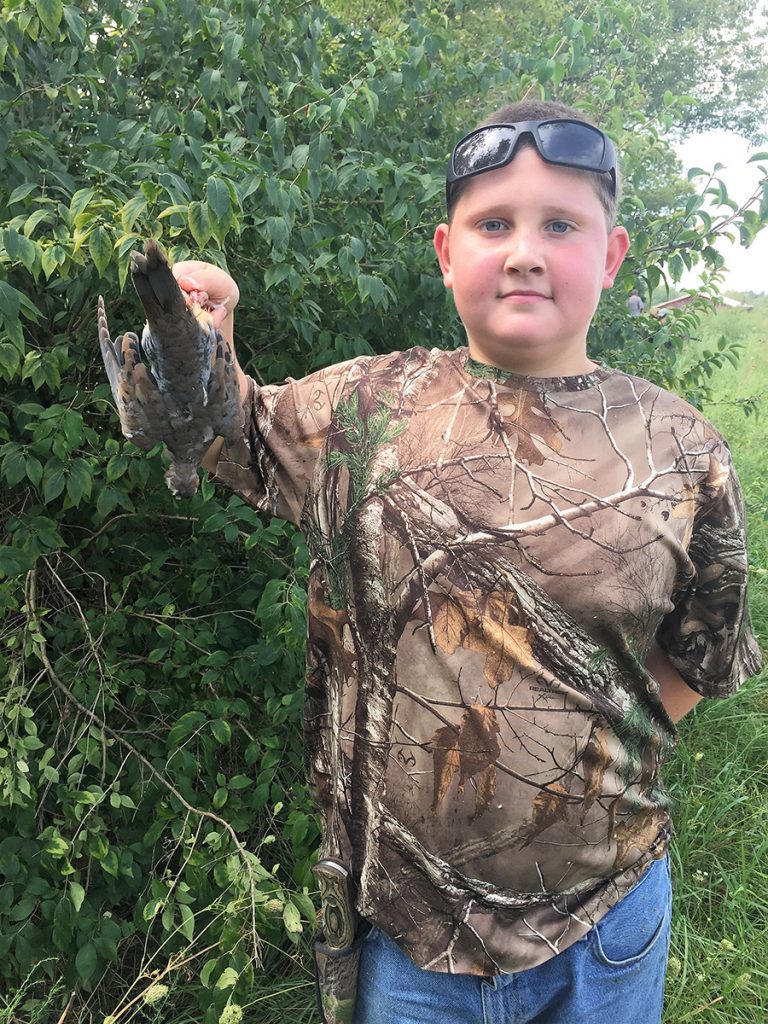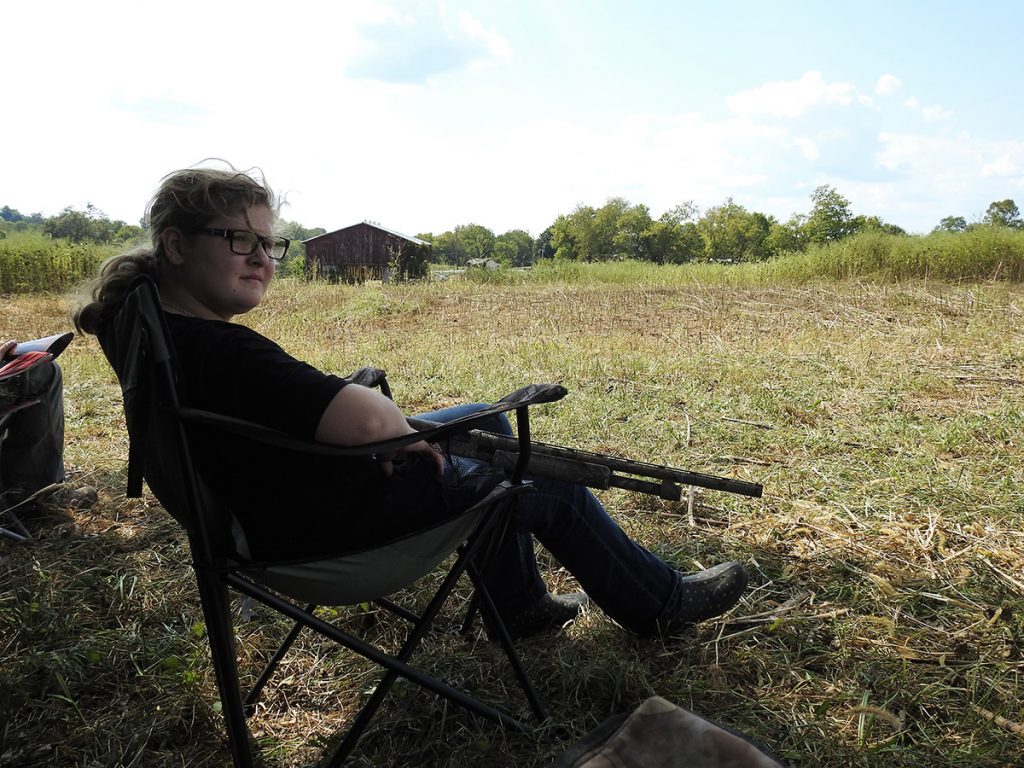
Doves—The Perfect Youth Hunt
When people talk about the perfect way to introduce young hunters to the sport of hunting, they often mention large game like deer or turkey, and small game like rabbit or squirrel, but there’s another option that might be better than any of those.
Dove hunting combines fast-paced action, warm weather and a great social setting. The challenging targets can be tough, even for experienced shooters, but a good dove field provides ample opportunity for expending ammunition (and that’s half the fun for everyone, but especially youth shooters).
In most states where dove hunting is legal, it’s one of the first seasons to open, usually right at the end of August and early September. Labor Day weekend openers are a tradition in many states. Either way, they’re the perfect occasion to spend some time afield with a new hunter, especially as a last salute to summer as the school year gets under way.
Want to get the most out of your youth dove hunt? Here are a few tips:
Fit the gun to the shooter
Doves can fly up to 60 mph, and they don’t just do it in a straight line. Darting, diving, twisting and turning, doves can be one of the most difficult game animals to hit, even for experienced shotgunners. Don’t hamstring your young hunter with a gun that is too large for their frame or one that kicks so hard they don’t enjoy the experience. While they may be tough to connect with, doves don’t require a lot of shot to bring down. Youth-framed .410-bore or 28- and 20-gauge shotguns can all make great dove guns for young hunters, and they’ll be easy on the recoil with light field loads of No. 7½ or 8 shot.
If you are mentoring a new youth hunter, especially one who will be using a sub-gauge shotgun, spend some time at the range with some clay target shooting before the hunt so that they will be familiar with gun safety, muzzle control, mounting the gun and judging lead on moving targets. Once in the actual dove field, help them pick their shots—emphasizing where other hunters are around them—those birds that come close and are at easy angles above them, so that they can enjoy some success.
Gear up
Unlike some other forms of hunting, necessary dove gear is pretty minimal. A shotgun, a couple boxes of shells, a stool or bucket and a camo hat and shirt will outfit your hunter. Since dove hunting often takes place during warmer months, pack a cooler full of water and soft drinks. Suncreen and bug spray are usually useful too.
Making a day of it? My family loves to pack a picnic lunch and share it under a nice shade tree between morning and evening flights. Even if you don’t plan on spending a full day afield, pack a few snacks to ward off hunger and make slow times between birds more interesting.
Sit close to your new hunter
By positioning yourself next to your shooter, you are in place to point out incoming doves, call the shot when the bird is in range, warn against unsafe shots at low birds, and help mark and find down birds. The close proximity also makes a good time for conversation, something that doesn’t always come easily in today’s fast-paced lifestyle.
Pick a good spot that allows your hunter to see the birds before they are in range and allows for ample shot opportunity. Sitting in a corner while others do all the shooting isn’t fun for anyone, and it can turn a new hunter away from hunting in a hurry.
If you’re in a dove field crowded with other hunters, tell them you’re mentoring a new shooter. Most will be happy to slide over a notch and give your charge a real opportunity to take a few birds.

With other hunters and dogs constantly moving around the field, make sure your young hunters practice safe gun handling at all times. Photo C. Grubb
Focus on safety
As with all hunting, safety is the most important aspect of a successful hunt. Dove hunts are often social affairs, with numerous hunters nearby, numerous dogs working the field, and birds coming in from all directions, angles and heights.
Before the first shot gets fired, have a safety talk with your hunter. Gun safety should have been discussed at length before the first trip to the target range, but go over it again before loading up for the hunt. Cover low birds and why it is important to never shoot at a bird at less than a 45-degree angle from the ground up when other hunters may be located on the opposite side of the field. Also, with new shooters, consider loading only one shell at a time for them until you are sure of their safe gun handling skills and their focus on keeping the muzzle always pointed in a safe direction
Eye protection in the dove field is vital—Though too many go without it.
With multiple hunters surrounding a field and firing skyward, raining shot is a common occurrence. Good shooting glasses not only protect eyes from an errant pellet, amber- or yellow-tinted lenses help with bird acquisition, particularly on cloudy days and with dark trees as background.
Since lots of dove hunting is done in close quarters, hearing protection is a good idea. Hearing damage from even a single hunt can last a lifetime. Muffs or digital plugs that allow normal conversation but shut out loud noises are perfect. Even foam plugs will help prevent damage.

Safety first. Eye protection is a must in a busy dove field, and help new young hunters take only safe shots. Photo C. Pendley
Ethics in the dove field
A dove hunt is the perfect opportunity to teach good hunting ethics that will last a lifetime. On our hunts, downed birds count against bag limits, even if they can’t be located. A downed bird is usually a dead bird, and that should count toward a hunter’s daily limit. We stress that every effort to find downed game should be exhausted before giving up, and we encourage our young hunters to help others locate their birds. It’s a good habit, and they might need someone to return the favor on a future hunt.

Make sure everyone puts in maximum effort to find every downed bird, no matter how thick the cover. Photo C. Pendley
Serve ’em up at the dinner table
One of the best things about hunting is the table fare it provides and the opportunity to teach young hunters where their food really comes from. Let them help, or at least watch, the doves being prepared for the table. Even better, let them help prepare the doves with a simple recipe like bacon-wrapped dove poppers on the grill. Their tales from the hunt and how they helped provide the meal will provide some of the most entertaining dinner conversation you’ve had in a long time.

Get your young hunters involved in every aspect of the hunt, including dressing the doves and cooking them.
-*-*-*-*-*
Kentucky native Michael Pendley has been hunting since he was old enough to say the word “rifle.” He’s been writing in the outdoor industry for the past 15 years, and his work has appeared in Field & Stream, Sporting Classics Daily, Modern Pioneer, Petersen’s Hunting and others, though he is perhaps best known for his “Timber 2 Table” column on Realtree.com. When he’s not in the kitchen whipping up something mouthwatering or sampling Kentucky’s fine bourbons, he, along with his wife and photographer, Cheryl, their daughter, Michaela, and their two sons, Hunter and Nathaniel (aka Potroast), along with their basset hound, Blanton, and bloodhound, Teddy, can be found traveling the country and enjoying everything the outdoors has to offer.
Check out this Delicious Dove Recipe


